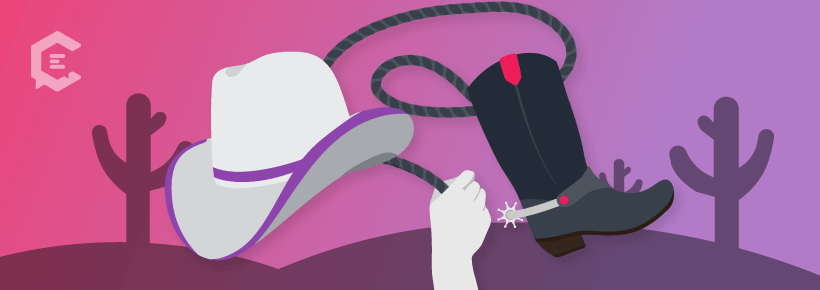When you think about influencers for a campaign, you should be thinking: Who is the best brand ambassador for me and my product? Who aligns with my target demographic?
We all know that beauty influencers have changed the cosmetics industry — and the accepted eyebrow and lip standards of beauty. We know that home décor influencers of Pinterest have inspired millions to up their homemaking game. And we know that pop culture influencers who combine social media with TV stardom can drive purchase decisions for millions of teens and millennials.
Beyond that, the influencer landscape is glutted with people who would have been called “promotional/catalog models” in past generations. Those latter categories are the ones that inspire someone in every category to ask, “But who do they influence?”
When thinking about influencers for your industry, the options aren’t limited to those in the most competitive categories — and if you want someone to take cute pictures, you can just hire a catalog model for considerably less than influencer rates. Also, it’s important to understand that an influencer partnership does not work on the principle as a celebrity endorsement (i.e., hire a pretty face with a million followers to make your product look more glamorous). The advantage of influencer marketing as a strategy is that there are influencers in so many niches, you can actually find one who’s in the same niche as your potential customers. The trick is defining that demographic and finding the niche influencers.
In the course of my work, I’ve had to look for influencers — or category experts, as I prefer to call them — in all kinds of different niches. It’s become one of my favorite parts of the job. And it’s exposed me to the diverse, quirky, glorious and surprising multitudes that Instagram holds. (For example, did you know that there are slime influencers? Now you do!)
Niche Influencer Categories
Military influencers
A recent NPR poll found that 87% of Americans trust the military as an institution — more than trust religion or the Judiciary branch. This extraordinarily high number proves that active military and veterans as a group transcend partisan or religious beliefs. And the influencers transcend stereotypes. They’re of diverse interests and races; they’re trained to have discipline and drive; and they often tend to be personally aligned with at least one charitable cause. Not to mention, due to an intensely physical first career, these folks tend to be fit and charismatic without looking overly self-obsessed. If you’re trying to reach mainstream American families, military influencers are a fascinating niche.
Educator influencers
Discovering teacher influencers a few months ago was simultaneously uplifting and quite distressing for me. Uplifting because the content these influencers post is as wholesome and happy as an educational picture book, with grammar lesson graphic tees and color-blocked classrooms. But distressing because one of the top reasons that teachers become influencers is to supplement income that’s too low to sustain an enjoyable quality of life. My personal plea to anyone with a smart or curious target consumer: Please hire educator writers and pay them! It’s better karma and better for your brand identity than hiring a reality show character or YouTube prankster.
But what specifically are educator influencers? Well, primary and junior high teachers make up a high percentage of the “teacher bloggers” on the Web and Instagram. They garner thousands of engagements on posts of bulletin boards or bookshelves. If you want to know more, check out this recent Buzzfeed article. There are also oodles of academic Twitter personalities and bookstagrammers, as well as a hilarious community of Twitter scientists, and the education technology influencers whose sphere of influence extends far outside social media.
Western influencers
Where Southern style bloggers are overpriced, identical, and over-polished (back away from the Facetune, ladies!), Western style is still a small and underutilized pool — comprised of a mix of rodeo professionals, ranchers, country enthusiasts and small town photographers. Though they don’t have the enormous followings and catalog-style aesthetic of Southerners, you can be reasonably sure the followings they do have are authentic. Plus, if you partner with a Western influencer, you can ideally ask them to find one of those epic American West landscapes — Arizona canyons, Colorado mountains or vast acres of prairie.
Medical industry influencers
Though this is a small niche, it’s growing — especially in certain categories like cosmetic surgeons and dentists. It makes sense that the practice areas focusing on physical features use Instagram for their marketing, with a focus on before-and-after shots. But many doctors in other categories use YouTube as a platform to provide more in-depth presentations, deep-dive into data, and just speak candidly about their experiences serving patients. Twitter is also a popular platform, since it’s so easy for medical professionals to communicate with each other, the media and anyone in the public who’s interested in joining doc-doc.
Online communities are a huge boon of social media, and the best medical institutions nurture and even moderate those communities. A great example is Mayo Clinic Connect, which lives on a subsection of mayoclinic.org but originated on social media. Colleen Young, the online community strategist of Mayo, is one of the leading medical industry influencers who is not a doctor.
Senior influencers
With the number of Boomers and beyond who have taken to Facebook like ducks to water, it’s a wise prediction that we’ll see more and more elderly influencers. Already having become accustomed to blogging for professional reasons, retiring media professionals and personalities are positioned to jump into personal brand visibility as they enter their retirement years.
Just as much as teens have aptitude, so do some seniors who innately understand how to use social media for reaching beyond friends and family circles. Prime example: George Takei. But there are others who didn’t have famous TV star careers: for example, master yogini Tao Porchon-Lynch and the irrepressible adventuress “Grandma” Joyce Williams.
Also, for those who worry that your favorite gurus won’t make the jump from print to social, be cheered by this happy news from bookstore shelves of yesteryear: Andrew Weil was a beloved graybeard back when nutrition and healthy lifestyle guidance came from Waldenbooks. He hasn’t changed whatsoever in 20 years, but has managed to transition from print to social media with impressive fluidity — and 636K Twitter followers.








